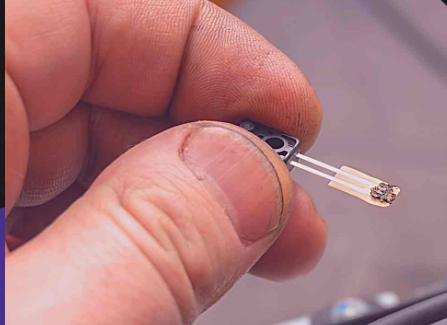- Ameya360 Component Supply Platform >
- Trade news >
- Understanding Thermistors: How Do Thermistors Work?
Understanding Thermistors: How Do Thermistors Work?
A thermistor is a type of temperature sensor made from semiconductor materials. The word "thermistors" is a combination of "thermal" and "resistor," which helps give a clue to its function- to change its electrical resistance in response to changes in temperature.

Understanding Thermistors
Thermistors are used in various applications requiring temperature measurements, such as in thermostats, controllers, and temperature-compensating circuits. They are particularly useful in tools requiring high accuracy and fast response times. A thermistor is a temperature sensor that uses the change in resistance with temperature to measure temperature. It is commonly used in electronic circuits to monitor temperature and control heating and cooling systems.
Importance of Understanding How Thermistors Work
Understanding how thermistors work is essential since it enables accurate temperature measurements, a critical activity in many applications such as electronic circuitry, medical equipment, and environmental monitoring. It also allows for properly selecting and using thermistors in various systems and devices.
Also read: What Is an Inductor in a Circuit?
The Physics Behind Thermistors
Electrical resistance is a material's opposition to the flow of electric current. It is measured in ohms (Ω). The temperature coefficient of resistance (TCR) describes the relationship between temperature and electrical resistance, which measures how much resistance changes with temperature. There are two types of thermistors: negative temperature coefficient (NTC) and positive temperature coefficient (PTC). NTC thermistors have a negative TCR, which means their resistance decreases as temperature increases. PTC thermistors have a positive TCR, which means their resistance increases as temperature increases.
How Are Thermistors Constructed?
Thermistors are typically made of metal oxides, such as manganese, nickel, cobalt, or copper, which exhibit a significant change in resistance with temperature. The manufacturing process involves mixing the metal oxide with a binder and pressing the mixture into a desired shape. The mixture is fired at high temperatures to remove the binder and sinter the metal oxide particles. The resulting thermistor can vary in size and shape but is typically small and cylindrical, with a few millimeters or less diameter.
How Thermistors Work in Practice
Thermistors work by changing their resistance in response to changes in temperature. They are often used in circuits to measure temperature, as their resistance can be easily converted into a temperature reading. Thermistors are connected in series with a fixed resistor and a voltage source to create a voltage divider circuit. The voltage across the thermistor is then measured and used to calculate the temperature. The thermistor's resistance decreases as the temperature increases, causing the voltage across it. This change in voltage is proportional to the change in temperature.
Also read: What Is the Maximum Voltage Across a Resistor You Can Safely Apply?
Advantages and Limitations of Thermistors
The advantages of thermistors include their high sensitivity, fast response time, and low cost. They are also relatively small and can be used in several applications. However, thermistors have limitations, such as non-linear response, self-heating, and a limited temperature range. Compared to other temperature sensors, such as RTDs or thermocouples, thermistors are less accurate but more cost-effective for many applications. They are commonly used in consumer electronics, HVAC systems, and automotive applications.
Final Words
Understanding thermistors is crucial for many industries that rely on temperature control and measurement. The ability of thermistors to provide highly accurate and sensitive readings makes them an essential component in various applications, including medical devices, automotive engines, and electronic devices. Engineers and technicians can design and optimize systems for better performance and efficiency by knowing how thermistors work. Therefore, a thorough understanding of thermistors is vital for anyone working in fields that require temperature monitoring or control.
Get Customized Electronic Components at Allied Components International!
Visit Allied Components International to learn more about thermistors and other electronic components and get customized ones. Explore our resources to understand how thermistors work and how they can be used in your applications. Contact us to speak with our experts to ensure you get the right components for your needs.
Online messageinquiry
- Week of hot material
- Material in short supply seckilling
| model | brand | Quote |
|---|---|---|
| BD71847AMWV-E2 | ROHM Semiconductor | |
| TL431ACLPR | Texas Instruments | |
| RB751G-40T2R | ROHM Semiconductor | |
| MC33074DR2G | onsemi | |
| CDZVT2R20B | ROHM Semiconductor |
| model | brand | To snap up |
|---|---|---|
| IPZ40N04S5L4R8ATMA1 | Infineon Technologies | |
| BP3621 | ROHM Semiconductor | |
| TPS63050YFFR | Texas Instruments | |
| ESR03EZPJ151 | ROHM Semiconductor | |
| STM32F429IGT6 | STMicroelectronics | |
| BU33JA2MNVX-CTL | ROHM Semiconductor |
- Week of ranking
- Month ranking
Qr code of ameya360 official account
Identify TWO-DIMENSIONAL code, you can pay attention to


Please enter the verification code in the image below:






















